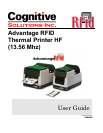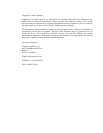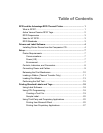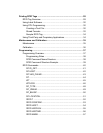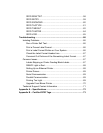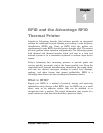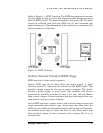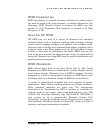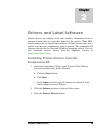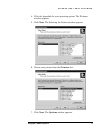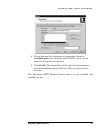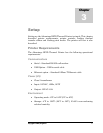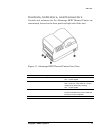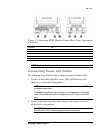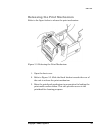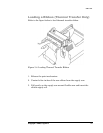
RFID AND THE ADVANTAGE RFID PRINTER
Refer to Figure 1-1, RFID Overview. The RFID tag contains an antenna
(A) that allows the tag to receive and respond to radio-frequency queries
from an RFID reader. The reader transmits radio waves (B). The radio
waves are reflected back from the RFID tag (C) and converted into
digital information. This information is then passed on to computers (D)
that can make use of the data.
Figure 1-1. RFID Overview
Active Versus Passive RFID Tags
RFID tags can be either active or passive.
Passive RFID tags do not have their own power supply. A small
electrical current is induced in the antenna by the RFID reader. This
provides enough power for the tag to send a response. The device,
lacking a power supply, is quite small. The smallest such devices
commercially available measure 0.4 mm × 0.4 mm, and are thinner
than a sheet of paper. Passive tags have practical read ranges that vary
from about 10 mm up to about 5 meters.
Active RFID tags have a power source, and can have longer ranges and
larger memories than passive tags. Active tags also often have the
ability to store additional information sent by the transceiver. Presently,
the smallest active tags are about the size of a coin. Many active tags
have practical ranges of tens of meters, and a battery life of up to
several years.
Copyright © 2004, Cognitive. 2



